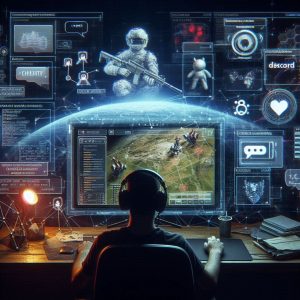How Technology and Communications Shape Tactical Game Cheats
 The gaming world has grown fast, and so have the tools that shape how we play. Technology and communication platforms now play a big role, especially in tactical games. One major area this shows up in is Tarkov cheats. While some players use cheats for fun or shortcuts, others see them as a threat to fair play.
The gaming world has grown fast, and so have the tools that shape how we play. Technology and communication platforms now play a big role, especially in tactical games. One major area this shows up in is Tarkov cheats. While some players use cheats for fun or shortcuts, others see them as a threat to fair play.
The Role of Technology in Game Cheats
Modern cheats in tactical games are no longer simple codes. They now involve advanced tools like scripts, bots, and software overlays. These cheats can track enemy movements, auto-aim, or even reveal parts of the map meant to be hidden. These programs run quietly in the background, sometimes undetected by basic anti-cheat systems.
Developers of these cheats often reverse-engineer game files or use memory editing tools. As technology improves, cheat makers get faster at finding weaknesses. At the same time, game developers now use machine learning to spot cheating behavior, creating a constant back-and-forth between both sides.
Communications Platforms and Cheat Sharing
The rise of online communication platforms has made cheat sharing easy. Players now use Discord, Reddit, Telegram, and private forums to trade cheats and tips. Some even pay real money for exclusive tools or cheat subscriptions.
Many communities are hidden or invite-only to avoid detection. Within them, users post updates on new cheats, share setup guides, or offer tech support to other users. This quick flow of information makes cheats spread faster than ever. Communication tools have made it easier for both casual users and organized groups to stay one step ahead.
The Push for Fair Play
With cheats becoming more common, game developers are stepping up. Most tactical games now use real-time anti-cheat systems. These tools scan for strange behavior, like perfect accuracy or strange movement patterns. Players caught using cheats often face bans, suspensions, or blacklists.
Developers also rely on community reporting systems and crowd-sourced data to find cheat patterns. By combining tech tools with player reports, they can act fast. Some even reward users for reporting bugs or cheat methods before they go public.


 In the rapidly evolving landscape of modern business, the confluence of technology, communication, and example of tacit knowledge has become a focal point for companies striving for efficiency and innovation.
In the rapidly evolving landscape of modern business, the confluence of technology, communication, and example of tacit knowledge has become a focal point for companies striving for efficiency and innovation.